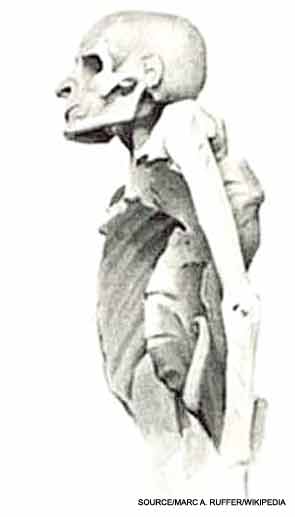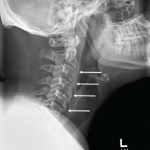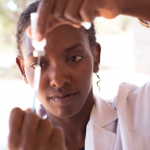
Clues to Past Life
Paleopathology also provides clues to ancient lifestyles and habitats. For example, auropod dinosaurs (e.g., Apatosaurus, aka Brontosaur) were thought to spend substantial time in the water and climbing swamp or river banks. That would have put great stresses on the forefeet, but, paradoxically, stress fractures only affected their hind feet. Some researchers have speculated that they would stand on their hind feet, similar to ballet positions. However, the sauropods lacked the facet (zygapophyseal joint) and did not have the forefoot stress fractures characteristically noted in ballet dancers subject to such posture.24
Perspectives of disease have, at times, been predicated upon historical accounts. These have to be analyzed to assure that ancient diagnoses actually correlate with modern diagnoses. The written record must be analyzed from primary sources. Leprosy is the classic example of a disease that has been misunderstood by reading the ancient records. Studies of archeological “leprosy cemeteries” created a perspective of disease that could not be correlated with what was found in contemporarily diagnosed populations.25 The archeological sites were “leprosy cemeteries” related to the Leprosauria that Pope Clement closed in 1508 and 1510. There were approximately 10,000 cemeteries, each housing at least 100 bodies. This suggests that more than a million individuals were afflicted with leprosy, a number that seems illogical. So, what did leprosauria actually represent, and who was buried in their associated cemeteries? Examination of diagnostic categorization in the 15th and 16th centuries reveals that many skin disorders were classified as/with leprosy. For example, psoriatic and reactive arthritis have associated joint destruction with cutaneous changes that could have been confused with leprosy. Most of the individuals in these cemeteries have skeletal changes that are now recognized as being characteristic of the spondylarthropathies.25
The foundation for scientific paleopathology is the establishment of sufficient skills and experience to accurately identify physical findings. Accuracy replaces the previous precision-based approach, where precision is defined as adherence to authority-based perspectives, which vary among those who claim to be authorities.4,26 The latter is compromised because critical scientific methodology was apparently not understood.
The classic exemplar is the challenge that periosteal reaction presents to the field of anthropology.26 Remodeling of the outer layer of cortical bone can have many etiologies, ranging from healing trauma to infection to cancer. Trauma may directly alter bone surfaces (e.g., bone bruises) or may manifest as a cumulative effect (e.g., stress fracture). Infectious damage may be related to pyogenic, tuberculous, fungal, or treponemal disease.1,4 Among anthropologists, there was a view that most occurrences of periosteal reaction in populations must represent the result of trauma.27 That speculation does not withstand scrutiny. No correlation was noted in populations with significant environmental hazards.28,29 As an example, periosteal reaction was absent in hostile environments such as the Northwest Territories of Canada, but was common in the Nubian desert.


